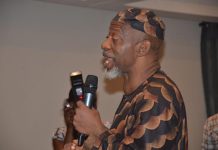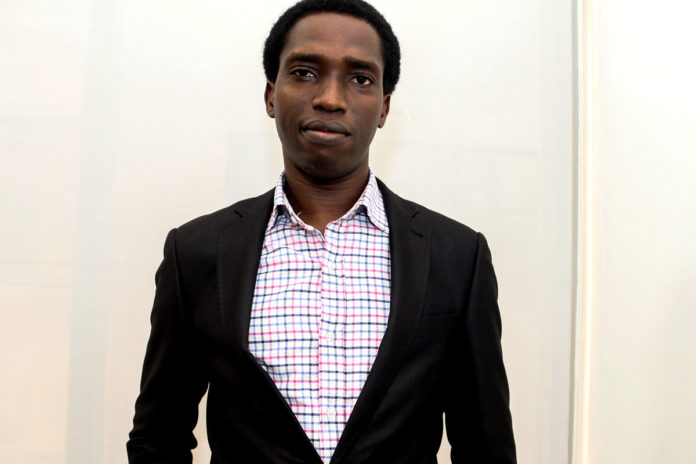One of the definitions of Influencer marketing that I like is that it is a type of marketing that focuses on using key leaders to drive your brand’s message to the larger market. Instead of marketing directly to a large group of consumers, you engage influencers to get your brand’s key messages out there for you.
In 2016 and 2017, influencer marketing was no doubt one of the biggest gigs introduced in Public Relations practices globally. New opportunities were unlocked that enabled brands work with social media content creators creatively and differently. The results were indeed notable. With 70 percent of teenage YouTube subscribers trusting influencer opinions over traditional celebrities, the adoption of video content by marketers producing the best return on Investment (ROI), 86 percent of women turning to social networks before making a purchase and on average, businesses generating $6.50 for every $1 invested in influencer marketing; it would seem that latching on to influencer Marketing is the way to go for brands.
For a while in Nigeria, the wave of celebrity and public figures endorsement as influencers by brands seem to be the trend by large businesses especially in the Telco, beverage and financial industries. Celebrities and public figures were initially the obvious choice because they use their popularity and reach to spread the word about products, companies and services. However with the entry and adoption of social media platforms, people started connecting with specific interests and subjects. This has caused the emergence of different types of influencers. Celebrity influencers were now just the beginning.
A Celebrity Influencer is often what people think of first when they are thinking about Influencer marketing. These are the “2Babas” and “Wizkids” of the internet and social media space. Another type of influencers are the Authority Influencers. These often write books, do speaking gigs, write articles, host a podcast, do a video series, or write for prominent publishers. The “Fela Durotoyes” and “Toke Makinwas” will fit right here. Their goal is to build an audience who will listen to them and they can also be referred to as Macro Influencers. PR Influencers are next. These are the media guys who give you a lot of press. They are great for start-up businesses and must not be underestimated when driving Influencer Marketing Campaigns. Connector Influencers are those influencers that can connect you with other influencers. These are great for creating viral campaigns. The last type of influencers are the Micro-Influencers. They do not necessarily need to have a huge number of followers, these are everyday people who can be engaged for an influencer marketing campaign. People trust advice and recommendations from other people that they know and trust; thus, the Micro Influencers get their friends and family to quickly lash on to the brand’s messages they are propagating. Again, Micro Influencers can be easily engaged on a low budget.
In 2018, communicators are now under pressure to identify the best influencers and show that their campaigns are delivering the intended returns. It is no more business as usual and brand marketers are beginning to ask for verifiable metrics, affiliate links, and Google Analytics, that are able to show brands a great deal of data that allows them to measure the successes of their campaigns. Gone are the days when brands will randomly select influencers just because they have a huge social media following. We live in a world of fake followers and through all the clutter, it is now imperative as part of influencer marketing techniques to figure out which influencers are best to work with per campaign.
In Nigeria, influencer marketing is a big deal employed by brands to engage large communities which they justifycommunicate their key messages consistently with. In April 2018, brands such as GT Bank, Coca-Cola, Milo Nigeria, Jameson Irish Whiskey and TECNO Mobile Nigeria used Influencer Marketing to create some form of campaign hype or publicity with their target audience. While it might look like another bubble in the communication world that is presently expedient, the imperative question is, “How are the right influencers selected to ensure the right return on Investment (ROI) on an Influencer Marketing Campaign?”


Here are some guidelines for selecting the right influencers for your marketing campaign and ensuring that the right ROI is achieved:
- Goal Setting: This is very important. The marketing objectives for the campaign must be initially specified and clearly defined. By doing this, the Key Performance Indicators (KPIs) to measure the success become visible. The objectives and the KPIs will be communicated to the target influencers that you will be working with. Examples of the influencer marketing goals can be creating brand awareness, generate sales, attracting new target markets, increasing social media followers or ensuring customer retention. Ultimately the marketing campaign is yours, therefore, you need to ensure that every participant clearly has an understanding of the goals.
- Quality Content: Content is definitely King. Often, communicators and brand owners focus on the distribution of content for reach and impressions rather than on the creation of quality content. Quality content implies that the content is engaging, unique and specifically suited for the audience. In determining your strategy to create quality content, whether you prefer to use memes, photo images, polls, videos, emoji, texts or animations and so on; you need to ensure that the content is accessible, actionable and visually appealing.
- Audience-Market fit: There should be a direct and underlying fit between the influencers’ audience and the target market. In seeking to achieve the marketing objectives in an Influencer marketing campaign, it would not sit well if an engaged influencer has an audience that is in contrast with the target market that the brand intends to reach. For instance, selecting an entertainment influencer with a huge millennial audience to communicate political issues will be a capital “NO”. For instance, if your brand represents entertainment, then the right choice of influencers you must select should have an audience that appeals to entertainment.
- Engaging an Agency: Marketing Communication Agencies these days have a long roaster of reliable influencers on their books. They have carefully sieved out the different influencers that they believe are the best across different business industries with their profile data showing. The Agencies also have a mutual business relationship with these influencers. So, it is wise for you to reach out to these Agencies for assistance with your Influencer Marketing Campaigns.
- Engagement: It is not just about engaging influencers with more followers. It is about how much engagement the influencer is getting from the followers. Are the followers really concerned about the Influencer’s content? When the Influencer makes a post, are there likes and comments? How many do they get eventually? The level of engagement that the Influencer gets from followers also should be a precondition for the selection of Influencers for an influencer marketing campaign. Also, the engagement of an Influencer can be seen in the conversation. A conversion is when you manage to get somebody to respond to a Call to Action.
- Creativity: Today, we find out that it is mostly exciting when dealing with an Influencer and the content has been provided by the brand marketer or communicator from the Agency. Once the ball is turned around and the Influencer’s test of creativity comes into play to create content, it becomes a challenge. Definitely, influencers that can create their own engaging content would earn more. The problem here is that most Influencers in Nigeria are not creating their own contents that communicate the key messages of the marketing campaign they are involved in. Working with Influencers that are creative assist in making the communication process engaging as well as appealing. They normally would obtain better ROI.
 Nosa Emma-Iyamu, Assistant Consultant, Quadrant MSL, is a hard-working, skilled communications strategist with a keen eye for analysis, planning and implementation. He is committed to ongoing development, passionate about brand strategy and completely intrigued by the ever changing dynamics of today’s consumers. On the lighter side, he’s a lover of good movies, music and superheroes.
Nosa Emma-Iyamu, Assistant Consultant, Quadrant MSL, is a hard-working, skilled communications strategist with a keen eye for analysis, planning and implementation. He is committed to ongoing development, passionate about brand strategy and completely intrigued by the ever changing dynamics of today’s consumers. On the lighter side, he’s a lover of good movies, music and superheroes.



























